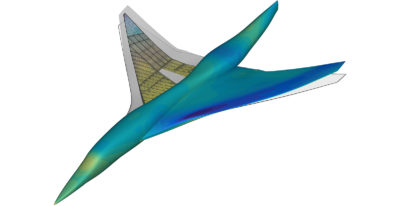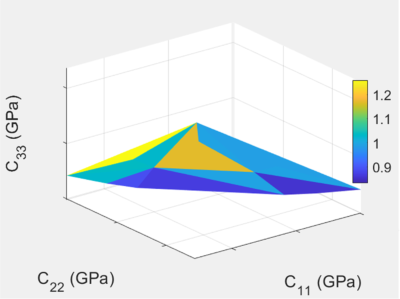Enhancing capabilities to measure, analyze and control fluid flows
By Unnikrishnan Sasidharan-Nair, Reetesh Ranjan and Scott Dawson|December 2021
The Fluid Dynamics Technical Committee focuses on the behaviors of liquids and gases in motion and how those behaviors can be harnessed in aerospace systems.
A team from Sandia National Laboratories in New Mexico completed in July a multiyear computational fluid dynamics validation challenge for a transonic flow over an axisymmetric body with shock-induced separation by implementing modern diagnostic capabilities for measuring surface pressure, surface shear stress and the off-body velocity field. The challenge kept participants “blind” to the experimental results and provided them only with the wind tunnel and model geometries and measured boundary conditions. Simulation results from Sandia and six participating teams, which used a variety of Reynolds-averaged Navier-Stokes and scale-resolving CFD techniques, highlighted the challenges of simulating separated flows when only minimal flow-field quantities are known. Researchers publicly released the validation dataset in August at AIAA’s Aviation Forum so that additional computational teams could test their own capabilities.
The DARPA Control of Revolutionary Aircraft with Novel Effectors, or CRANE, program is developing unique aircraft configurations that incorporate active flow control as the primary design consideration. This year, CRANE research collaborators worked on Phase 0, a 12-month program phase focused on extensive trade studies, component testing, and system modeling and analysis. Researchers matured their design tools and selected active flow control technologies prior to selecting a conceptual aircraft design. By August, DARPA had chosen selected teams to proceed to Phase 1 of the program, in which they will complete preliminary reviews of their designs.
Researchers at the University of California San Diego have developed a novel modal decomposition technique, the bispectral mode decomposition, which can identify nonlinear cascades in large datasets arising from experiments and computations. This technique gives insights into nonlinear triadic interactions among frequencies, as well as their causal relations, and computes interaction maps that indicate regions of nonlinear coupling. In August, the researchers presented the first practical applications of the method to turbulent jet acoustics and its use in the approximation of nonlinear transfer functions for real-time estimation.
At Michigan State University, researchers have demonstrated that the intermodal phase in a bimodal forcing scheme of an impinging jet can fundamentally alter the nature of vortex development in the jet, and this year, they incorporated time-resolved visualization to examine the evolution of instantaneous vortex structures. At certain intermodal phases, the jet vortices develop in a shear-layer-like manner, while at other phases, wake-like growth is observed. At yet other phases, more complex, intermittent behavior is found. These findings highlight the potential of using bimodal forcing as an effective tool for manipulating impinging jets in new ways to alter their effectiveness in cooling the impingement surface, or to change their noise signature.
In April, a team at the University of Minnesota demonstrated a unique measurement technique, digital Fresnel reflection holography, to quantify near-wall topology in three-dimensional flows. DFRH can achieve near-wall flow measurements at unprecedented spatial resolution and offers a new concept for designing highly compact digital inline holography probes. DFRH has discovered Kolmogorov-scale meandering motions that are responsible for stress events currently unresolved by state-of-the art direct numerical simulations. Based on these observations, researchers proposed a mechanism for drag reduction and flow control with roughness at a scale that is traditionally considered to be hydrodynamically smooth.
Contributors: Ryan Hofmeister, Jiarong Hong, Nathan Miller, Ahmed Naguib and Oliver Schmidt



































